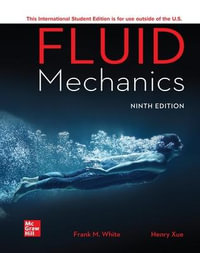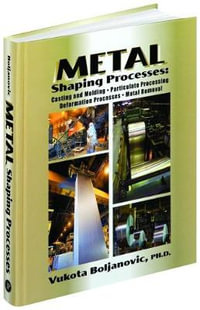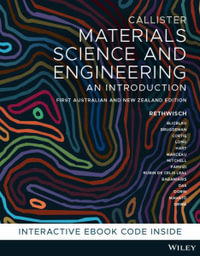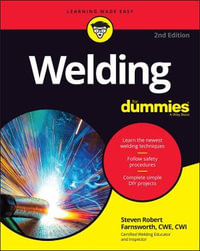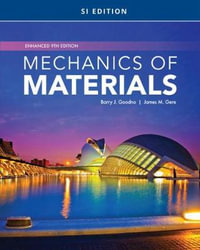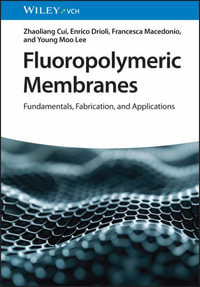
Aircraft Performance Theory and Practice for Pilots
By: Peter J. Swatton, Ian Moir (Editor), Allan Seabridge (Editor), Roy Langton (Editor)
Paperback | 29 August 2008 | Edition Number 2
At a Glance
544 Pages
Revised
24.6 x 17.0 x 2.7
Paperback
RRP $115.95
$72.95
37%OFF
or 4 interest-free payments of $18.24 with
orAims to ship in 7 to 10 business days
Series Preface xxiii
Preface xxv
Acknowledgements xxvii
List of Abbreviations xxix
Weight and Mass xxxiii
Introduction 1
Part 1 Aerodynamic Theory 5
1 Preliminaries 7
1.1 Air Density 7
1.2 Speeds 9
1.3 Engine Performance 10
Self-Assessment Exercise 1 17
2 Level Flight Aerodynamics 19
2.1 Stability 19
2.2 Angle of Attack and Pitch Angle 19
2.3 The Four Forces 21
2.4 Mass 21
2.5 Lift 22
2.6 Drag 24
2.7 Analysis of the Total Drag Curve 27
2.8 The Effect of the Variables on Drag 30
2.9 The CL v CD Polar Diagram 32
2.10 Analysis of the Lift/Drag Ratio 33
2.11 Thrust 34
2.12 Analysis of the Thrust Curves 34
2.13 The Effect of the Variables on Thrust 36
2.14 Power 40
2.15 Analysis of the Power Curves 40
2.16 The Effect of the Variables on Power 42
2.17 Summary 45
Self-Assessment Exercise 2 47
3 Take-off and Climb Aerodynamics 53
3.1 Take-off 53
3.2 The Effect of the Variables on Take-off 54
3.3 Climbing Flight 55
3.4 The Effect of the Variables on the Climb 56
3.5 Climb Gradient 56
3.6 Rate of Climb 63
3.7 Aircraft Ceiling 64
3.8 Climb Regimes 70
Self-Assessment Exercise 3 75
4 Cruise Control 83
4.1 Specific Air Range (SAR) 83
4.2 Buffet 84
4.3 The Buffet Onset Boundary Chart 85
4.4 Cost Index 87
4.5 Turns 87
4.6 Types of Cruise 88
4.7 Range and Endurance: General 89
4.8 Cruise Techniques for Piston-engined Aeroplanes 91
4.9 Cruise Techniques for Turbo-prop Aeroplanes 92
4.10 Cruise Techniques for Jet Aeroplanes 94
4.11 Summary 99
Self-Assessment Exercise 4 101
5 Descent Aerodynamics 109
5.1 The Forces in a Descent 109
5.2 Gliding for Maximum Range 110
5.3 Gliding for Maximum Endurance 113
5.4 Descent Regimes 114
Self-Assessment Exercise 5 115
Part 2 Scheduled Performance Theory 119
6 Performance Planning 121
6.1 Regulations and Requirements 121
6.2 The Performance Class System 122
6.3 Performance Legislation 123
6.4 Aeroplane Performance Levels 125
6.5 Performance Planning 125
6.6 Altimeter Corrections 129
6.7 Flight Manuals 130
6.8 Performance Calculations and Limitations 132
6.9 Noise Abatement Procedures 136
Self-Assessment Exercise 6 139
7 Aerodrome Geometry 143
7.1 Field Lengths Available 143
7.2 Take-off Run Available (TORA) 144
7.3 Obstacles 145
7.4 Stopway 146
7.5 Accelerate/Stop Distance Available (ASDA) 147
7.6 Clearway 148
7.7 Take-off Distance Available (TODA) 150
7.8 Balanced and Unbalanced Field Lengths 150
7.9 Field-Length-Limited Take-off Mass Calculations 152
7.10 Runway Alignment Reduction 152
7.11 Runway Slope Calculation 155
7.12 The Effect of Runway Slope on Obstacle Calculations 156
7.13 Landing Distance Available (LDA) 157
7.14 Runway End Safety Area (RESA) 158
Self-Assessment Exercise 7 159
8 Runway Surfaces 163
8.1 Aerodrome Pavement Strength 163
8.2 The Pavement Strength Reporting System 164
8.3 Aircraft Classification Number (ACN) 166
8.4 Contaminated Surfaces 166
8.5 Braking Coefficient of Friction 168
8.6 Surface Contaminants 170
8.7 The Effect of Runway Contamination 172
8.8 Hydroplaning 178
Self-Assessment Exercise 8 181
9 The Variables 185
9.1 Air Density 185
9.2 Wind Component 187
9.3 Aeroplane Flap Setting 190
9.4 Aeroplane Mass 191
9.5 Runway Slope and Surface 192
9.6 Miscellaneous Variables 193
9.7 The Maximum Take-off Mass 195
9.8 Calculations 196
Self-Assessment Exercise 9 199
10 Speeds 205
10.1 General 205
10.2 Summary 206
10.3 Stalling Speeds 207
10.4 Take-off Speeds 209
10.5 V Speeds and Take-off Field Lengths 220
10.6 Climb Speeds 221
10.7 Control Speeds 223
10.8 Landing Speeds 224
10.9 Other Significant Speeds 227
Self-Assessment Exercise 10 231
Part 3 Scheduled Performance Practice 239
11 Class ‘B’ Take-off 241
11.1 General Regulations 241
11.2 Take-off Speeds 242
11.3 Take-off Requirements 243
11.4 Take-off Distance Requirements 244
11.5 Class ‘B’ Take-off Calculations 245
Self-Assessment Exercise 11 253
12 Class ‘B’ Take-off Climb 257
12.1 General Requirements 257
12.2 Climb Minimum-Gradient Requirements 258
12.3 Obstacle Clearance Requirements 259
12.4 Take-off Climb Calculations 263
12.5 Climb Calculations – SEP1 & MEP1 265
Self-Assessment Exercise 12 273
13 Class ‘B’ En-route and Landing 277
13.1 En-route 277
13.2 Landing 280
Self-Assessment Exercise 13 293
14 Class ‘A’: Take-off Theory 297
14.1 General Regulations 297
14.2 Field-Length Requirements 299
14.3 Class ‘A’ FLL TOM Analysis 305
14.4 Field-Length Requirements Analysis 306
14.5 Rapid Calculation Methods 316
Self-Assessment Exercise 14 323
15 Take-off Calculations 327
15.1 Field-Length-Limited Take-off Mass 327
15.2 The Aeroplane Flight Manual (AFM) 327
15.3 CAP 698 Section 4 328
15.4 Take-off Mass and Distance Calculations 328
15.5 Take-off Abnormalities 336
15.6 The Maximum Take-off Mass 344
Self-Assessment Exercise 15 345
16 Class ‘A’ Take-off Climb 349
16.1 The Take-off Climb Requirements 349
16.2 The Relationship of NFP to GFP 353
16.3 Climb-Limited TOM 357
16.4 MRJT Climb-Limited TOM Calculations 362
16.5 Obstacle Clearance 363
16.6 MRJT Obstacle-Limited TOM Calculations 365
16.7 Planned Turns 367
16.8 The Performance-Limited Take-off Mass 371
Self-Assessment Exercise 16 373
17 Class ‘A’ En-Route 381
17.1 En-route Required Navigation Performance 381
17.2 Descent Gradient Diminishment Requirements 382
17.3 Terminal Aerodromes 382
17.4 En-Route Requirements for all Class ‘A’ Aircraft 383
17.5 En-Route Requirements for Three and Four-engined Aircraft 384
17.5.1 Two-engines-inoperative En-route Requirements 384
17.5.1.1 Operational Requirements 384
17.5.1.2 Route Restriction 384
17.5.1.3 Over-water Speed 385
17.6 En-Route Requirements for Twin-engined Aircraft 385
17.7 Maximum Distance from an Adequate Aerodrome (Non-ETOPS Aeroplanes) 386
17.8 ETOPS Aeroplanes 387
17.9 Obstacle Clearance Requirements: All Class ‘A’ Aeroplanes 389
17.10 Ceilings 390
17.11 Drift-Down Technique 391
17.12 Stabilizing Altitudes 392
17.13 Route Profile Comparisons 393
17.14 En-route Alternate Aerodromes 395
17.15 Fuel Jettisoning 395
17.16 En-route Calculations 397
Self-Assessment Exercise 17 405
18 Class ‘A’ Landing 409
18.1 The Landing Regulations 409
18.2 The Landing Field-Length Requirements 410
18.3 Approaches 415
18.4 Short-field Landings 415
18.5 The Climb-Limited Landing Mass 416
18.6 Climb-Limited Landing Mass Calculations 417
18.7 Normal Field-Length Limited Landing Mass Calculations 419
18.8 Scheduled Landing Mass Calculations 421
18.9 The Quick Turnaround Limit 425
Self-Assessment Exercise 18 427
Part 4 Conclusion 431
19 Definitions 433
19.1 Speeds 433
19.2 Distances 439
19.3 Altitude, Elevation and Height 441
19.4 Weight and Mass 442
19.5 ETOPS 444
19.6 Obstacles 444
19.7 Performance 445
19.8 Power Unit(s) 445
19.9 Surfaces and Areas 446
19.10 Temperature 446
19.11 Formulae used in Performance 447
20 Answers to Self-Assessment Exercises 449
Self-Assessment Exercise 1 449
Self-Assessment Exercise 2 449
Self-Assessment Exercise 3 450
Self-Assessment Exercise 4 452
Self-Assessment Exercise 5 452
Self-Assessment Exercise 6 452
Self-Assessment Exercise 7 454
Self-Assessment Exercise 8 454
Self-Assessment Exercise 9 455
Self-Assessment Exercise 10 455
Self-Assessment Exercise 11 459
Self-Assessment Exercise 12 462
Self-Assessment Exercise 13 464
Self-Assessment Exercise 14 466
Self-Assessment Exercise 15 470
Self-Assessment Exercise 16 478
Self-Assessment Exercise 17 482
Self-Assessment Exercise 18 485
Bibliography 487
Index 489
ISBN: 9780470773130
ISBN-10: 0470773138
Series: Aerospace Series
Published: 29th August 2008
Format: Paperback
Language: English
Number of Pages: 544
Audience: Professional and Scholarly
Publisher: John Wiley & Sons (UK)
Country of Publication: US
Edition Number: 2
Edition Type: Revised
Dimensions (cm): 24.6 x 17.0 x 2.7
Weight (kg): 0.91
Shipping
| Standard Shipping | Express Shipping | |
|---|---|---|
| Metro postcodes: | $9.99 | $14.95 |
| Regional postcodes: | $9.99 | $14.95 |
| Rural postcodes: | $9.99 | $14.95 |
How to return your order
At Booktopia, we offer hassle-free returns in accordance with our returns policy. If you wish to return an item, please get in touch with Booktopia Customer Care.
Additional postage charges may be applicable.
Defective items
If there is a problem with any of the items received for your order then the Booktopia Customer Care team is ready to assist you.
For more info please visit our Help Centre.
You Can Find This Book In
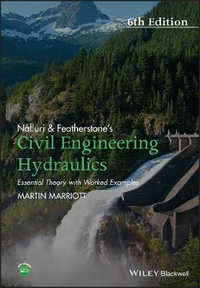
Nalluri And Featherstone's Civil Engineering Hydraulics
6th Edition - Essential Theory with Worked Examples
Paperback
RRP $82.95
$54.35
OFF
This product is categorised by
- Non-FictionEngineering & TechnologyTransport Technology & TradesAerospace & Aviation TechnologyAviation Skills & Piloting
- Non-FictionEngineering & TechnologyMechanical Engineering & MaterialsMechanical Engineering
- Text BooksTextbook FinderSwinburne University of TechnologyAVA10007 Aircraft Aerodynamics & Performance



